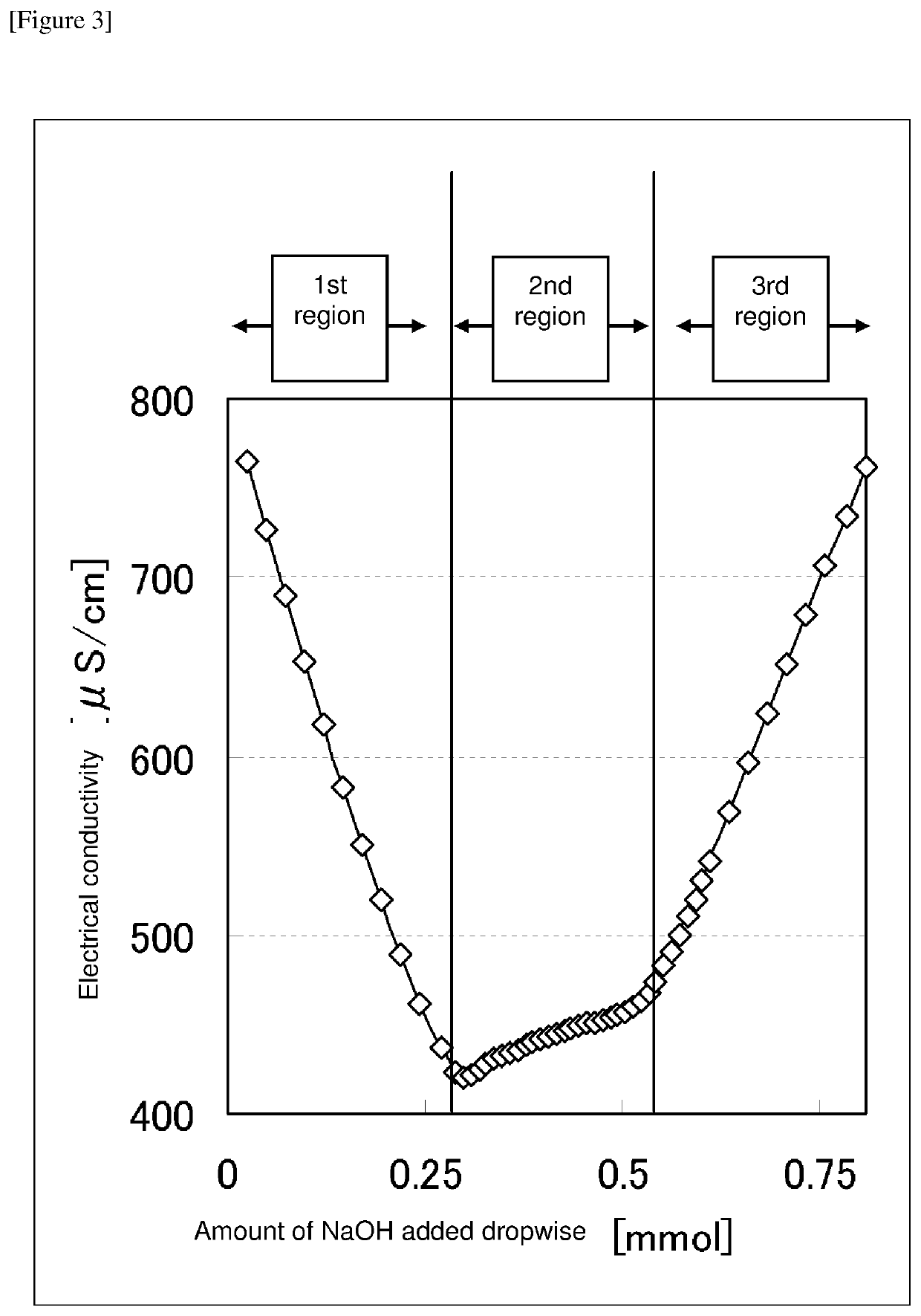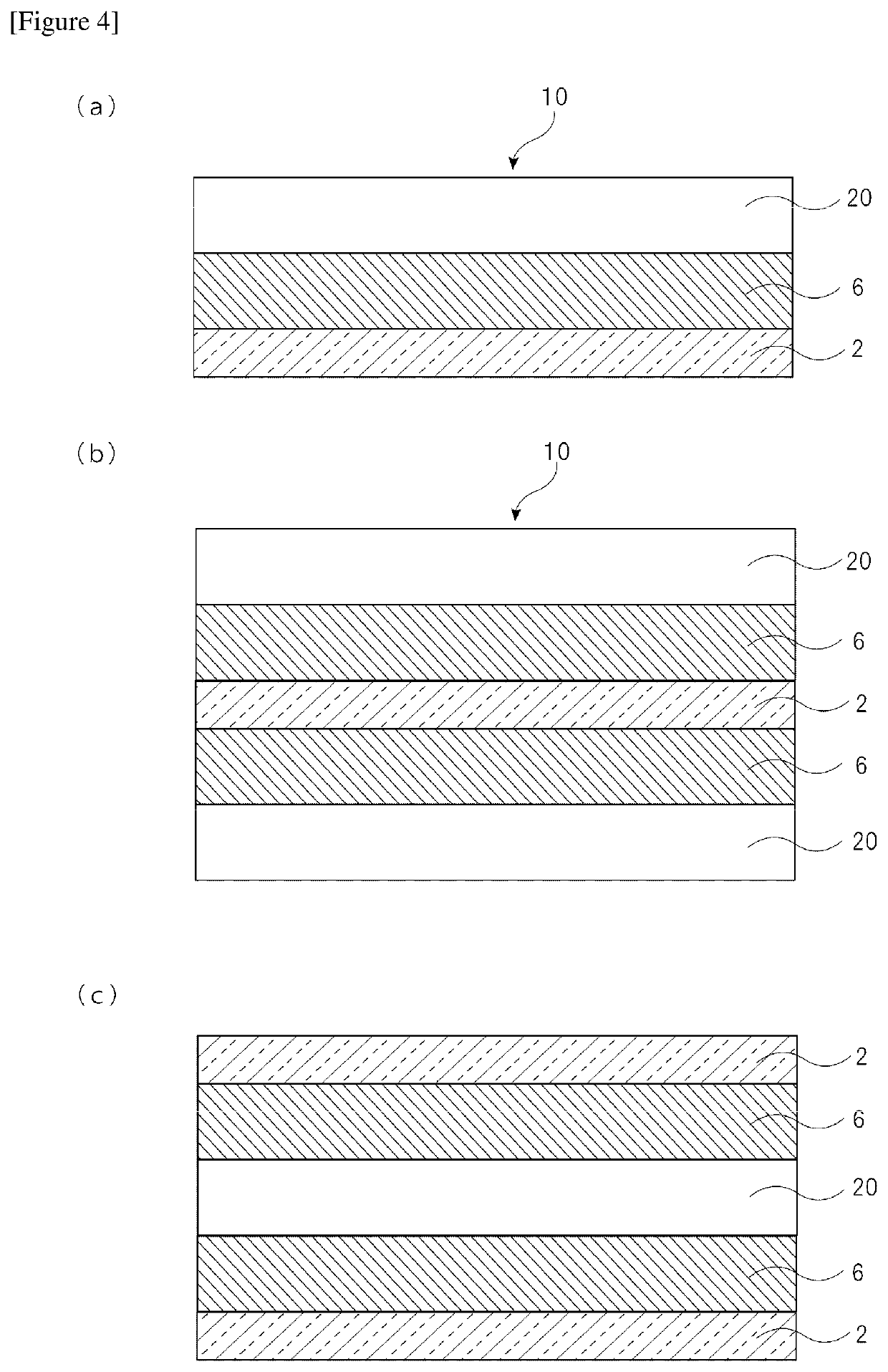Laminate and method for producing laminate
a technology of laminate and laminate layer, which is applied in the direction of synthetic resin layered products, vehicle components, textiles and paper, etc., can solve the problems of adhesion properties between ultrafine cellulose fibers, and achieve excellent adhesion properties between fiber layers and resin layers
- Summary
- Abstract
- Description
- Claims
- Application Information
AI Technical Summary
Benefits of technology
Problems solved by technology
Method used
Image
Examples
example 1
[0169]As a needle bleached kraft pulp, a pulp manufactured by Oji Paper Co., Ltd. (sheet-like having a solid content of 93% and a basis weight of 208 g / m2, and a Canadian standard freeness (CSF) measured according to JIS P8121 after disintegration of 700 ml) was used. A mixed aqueous solution of ammonium dihydrogenphosphate and urea was impregnated into 100 parts by weight of the needle bleached kraft pulp (absolute dry mass), and the resultant mixture was pressed to be 45 parts by mass of ammonium dihydrogenphosphate and 200 parts by mass of urea to obtain a chemical-impregnated pulp. The obtained chemical-impregnated pulp was dried and heat-treated for 200 seconds in a hot air dryer at 165° C. to introduce a phosphoric acid group into the cellulose in the pulp. The amount of the phosphoric acid group introduced at this time was 0.98 mmol / g.
[0170]The amount of the phosphoric acid group introduced was measured by diluting the cellulose with ion-exchanged water to a ...
example 2
[0175]A laminate in which a resin layer was laminated on both surfaces of a fiber layer was obtained in the same manner as that of Example 1, with the exception that the amount of an isocyanate compound added to the resin composition was set at 3 parts by mass in Example 1.
example 3
[0176]A laminate in which a resin layer was laminated on both surfaces of a fiber layer was obtained in the same manner as that of Example 1, with the exception that the amount of an isocyanate compound added upon lamination of a resin layer was set at 5.25 parts by mass in Example 1.
PUM
| Property | Measurement | Unit |
|---|---|---|
| width | aaaaa | aaaaa |
| density | aaaaa | aaaaa |
| diameter | aaaaa | aaaaa |
Abstract
Description
Claims
Application Information
 Login to View More
Login to View More - R&D
- Intellectual Property
- Life Sciences
- Materials
- Tech Scout
- Unparalleled Data Quality
- Higher Quality Content
- 60% Fewer Hallucinations
Browse by: Latest US Patents, China's latest patents, Technical Efficacy Thesaurus, Application Domain, Technology Topic, Popular Technical Reports.
© 2025 PatSnap. All rights reserved.Legal|Privacy policy|Modern Slavery Act Transparency Statement|Sitemap|About US| Contact US: help@patsnap.com



